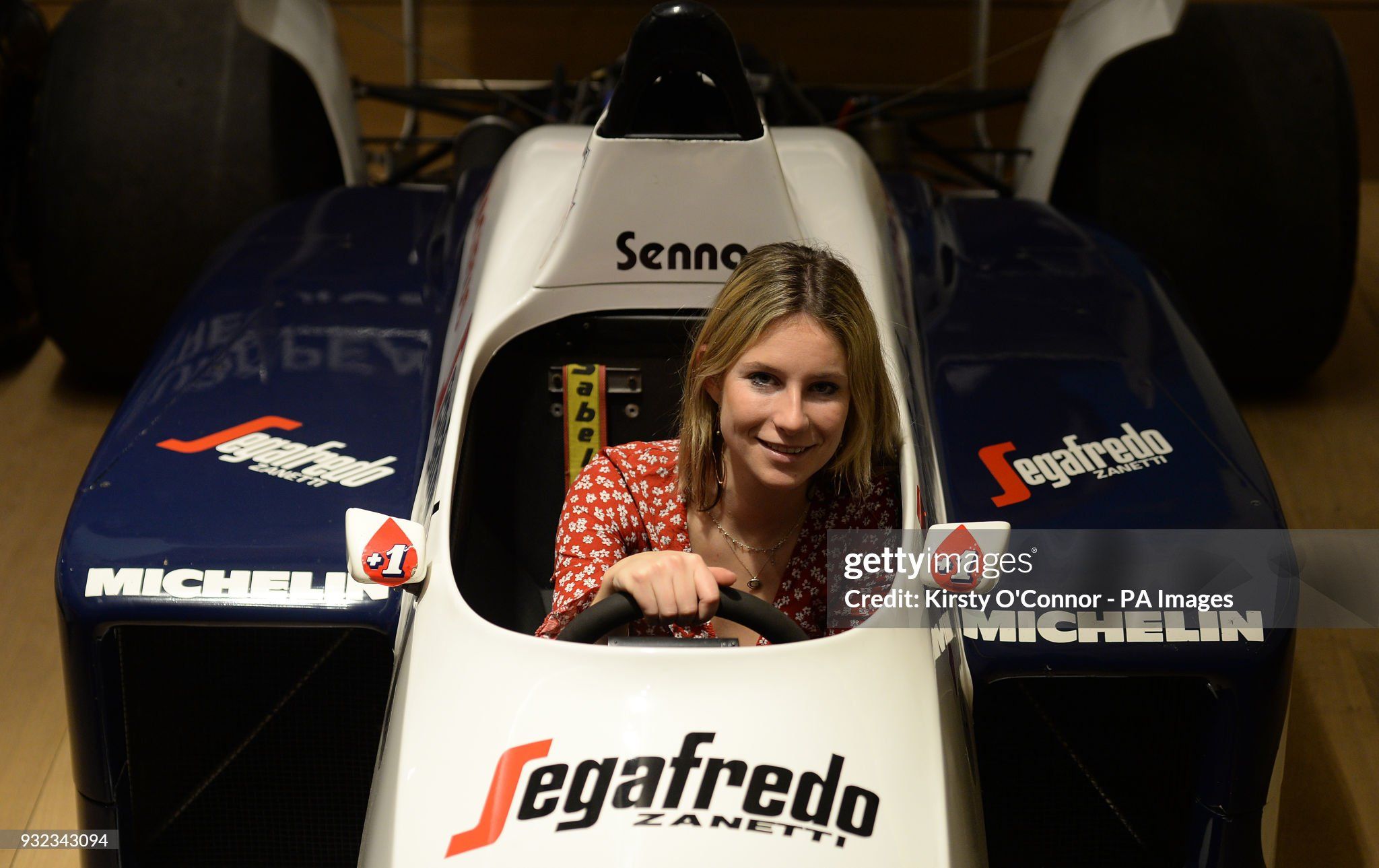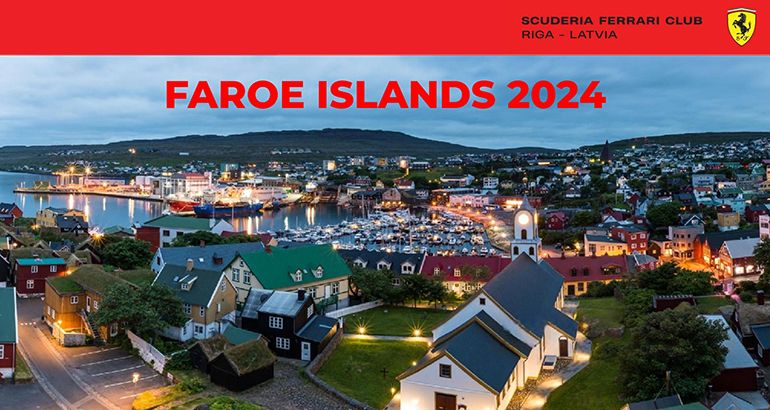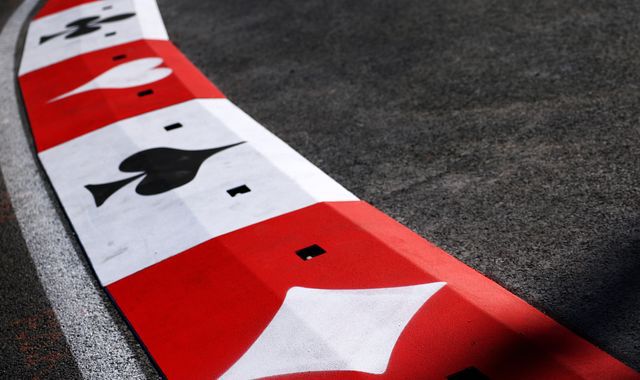Sebastian Vettel has openly questioned whether or not Formula One can survive the decade.

Photo: Mark Thompson (Getty Images).
https://jalopnik.com/sebastian-vettel-f1-might-not-exist-in-10-years-withou-1844965434
He is right to ask. Formula One is, like the rest of the world, at a point where it needs to decide how to proceed into the future and what changes to make to survive in the new world.
Formula One actually needed to do this a decade ago. It’s not too late, but it will be soon.
There are very good reasons to believe that Formula One won’t make it to the 2030s. These reasons can be put into three different categories. Ultimately, if Liberty Media do not step up in the very near future and take a hold of their sport and drive it in a new direction, then it will not survive.
Here are the problems for Formula One as I see them.
Problem 1: Sustainability
The main topic of conversation with regard to the future of Formula One is the question of sustainability and the post fossil fuel world. Formula One is currently working on a future that champions synthetic fuels, rather than attempt to move over to electric cars. Whilst I am in favour of this approach, this is a decision that should have been made years ago. Formula One looks like it’s playing catch up and indeed it is playing catch up. Formula One has had its head metaphorically dragged out of the sand and been forced to act. It should have been a leading visionary; instead, it looks like a rather churlish response.

A Ferrari F1 power unit.
It is to be expected, however, from the sport that developed the most revolutionary hybrid power units in the world and then trashed them for not being loud enough! Formula One stopped being visionary some time ago.
As well as a fossil fuel free future, Formula One needs to be able to justify a sport that travels the world and uses a great deal of resources. As usual, they talk about cutting things back, instead of decentralising. For example, they have talked about reducing the amounts of spares that a team could take to grand prix weekend. All this would achieve would be to make the racing worse, as teams would have to run less, take less chances and have poorer races. It is also pointless. What would be the point of a team travelling all the way to Brazil or Japan, only to run out of parts when they get there and be unable to compete? That’s not sustainable. What Formula One should be doing is partnering with local providers who could be contracted to teams to provide parts sourced locally. Not everything on an F1 car is made in the factory.

The Czinger 21C 3D-printed hypercar.
Furthermore, with the advances in 3D printing, with companies like Czinger (https://www.czinger.com/) making 3D printed supercars, more parts could be made at the Grand Prix, as needed, in partnership with local companies with those facilities. That is what sustainability means. It doesn’t necessarily mean making do with less; it means doing things in a different, better way.
Problem 2: Diversity
The next problem they have is their diversity problem. This is more than just a lack of female or BAME drivers. This is a real systemic problem in Formula One.
Formula One calls itself a global sport. It is not a global sport; it is a European sport that visits the rest of the globe annually. This is going to be a problem. It is no good stating that Formula One is extending to the rest of the world in places like Vietnam or Bahrain if all it does is visit. Ultimately, what does Formula One say to a young person in Vietnam or Bahrain or Brazil or Singapore when they like what they see and want to participate? Tell them that they must move to Europe? If Formula One is going to be sustainable in these markets, then both teams and drivers need to come from those places. Formula One and indeed, the FiA should be thinking about this and how it can happen. At the moment there are regional race series but they are often used by European drivers for winter races; the first Asian Le Mans series championship was won by a team based in a town in Surrey, England. Surely this is not the point of these series? Surely it is supposed to develop local talent. The FiA doesn’t seem that bothered about this. The FiA and Formula One need to start developing regional feeder series that allow drivers and teams to go from Formula 4 to Formula One without having to leave home. In the end, it won’t be acceptable to many international audiences to keep seeing teams turn up for a week and leave. For the sport to thrive, it needs to be genuinely global.
It goes without saying that Formula One has a major problem with toxic masculinity. This is a sport that only dispensed with the services of “Grid Girls” in 2018. Outside of promotional roles, you see very few women in a formula one pitlane. Whilst it is good to see more female members of staff in technical positions in recent years, they are still unusual in an overwhelmingly male environment. The question of female drivers has always been treated in a deeply disturbing, highly sexist manner. They will tell you that they would love to have a woman (just one) compete in Formula One in the future, but it has to be the RIGHT woman. This is the basis of the offensive W series, which hopes to find and promote a female driver with the potential to race in Formula One. On the surface it looks inclusive, but it is, in fact, a deeply problematic endeavour. It operates on the basis that women should do extra to earn their place. If there was a vacancy in a top corporate office for an intern, and the company announced that any young male graduate could apply and be judged on their merits, but female graduates would have to go through two screening programmes. Then the top 20 female candidates would be required to compete with each other so that the winner could have the opportunity to add her application to all the men’s, there would be uproar. This, in effect, is what W Series does. Women in Formula One are presented as exceptional, when they should be presented as normal.
Unfortunately, Ferrari have added to this by announcing that they will look for a couple of female racers aged 12 – 16 in order to mentor them through the early years so that they might be good enough. This is Ferrari effectively kicking the can down the road for at least half a decade. There are plenty of talented young women racing now, who would be good enough for, and would certainly benefit from, admittance to the Ferrari Young Drivers Academy.


Beitske Visser, Dutch racing driver.
Red Bull Racing’s famous, or infamous, young driver programme has only ever featured one female driver, the extremely talented Beitske Visser. This must be challenged. The FiA and Formula One management must insist that all young driver programmes are inclusive.
In the end, in order to survive, Formula One’s audience has to see itself represented on the grid, on all parts of the grid. They should see people like themselves as drivers, team members, press, organisers and officials. If they don’t, then they will start to look away.
Problem 3: Fan Engagement
The final problem Formula One has is the one they have been talking about and trying to address for years now. How to make Formula One more popular. Audiences are falling away. More worryingly, audiences are aging and the young audience is not coming on board.
There has been discussion for years about how to make the Grand Prix more attractive to a younger audience. It has been a depressing listen.

Bernie Ecclestone.
In the Ecclestone era, there was little, if any, social media. Ecclestone didn’t understand Social Media and didn’t see what it offered.

Chase Carey (in the center), owner of Liberty Media, with Sean Bratches (on his left) and Ross Brown (on his right), managing directors.
After Liberty Media took over, they set up a social media division, but it has not really done anything interesting. Mostly, it seems to have copy and pasted the same sort of thing done by Formula E and MotoGP. They do make good use of their archive footage, but it really isn’t anything different.

There is the Netflix series called “Drive to Survive”, for those who have Netflix. Increasingly, the grand prix broadcasts have gone behind paywalls. Formula One have tried to make their own platform, which is only available in certain territories and the media reports that it is full of bugs and other issues. You only get one chance to launch a piece of software and if it doesn’t work first time, it’s a long road back to credibility.
What no one in Formula One is asking themselves is: “why did I get interested in Formula One?” Certainly, there is nobody in a decision making position who grew up with social media. Anyone over 50 was lucky to get live races on their TV in their youth. It did not stop them developing a lifelong passion for the sport. Why was it so compelling then, but apparently less so now?
Essentially, what I believe that most people who love Formula One want to see is genuine authentic racing. They don’t feel they get that, for good reason. I believe they want to see the best racing drivers in the world. It is increasingly difficult to justify that title for Formula One, as so many genuine talents are priced out of race seats. They want to see amazing racing cars with new innovations. It certainly gets amazing racing cars, but it is increasingly difficult to see, and there is no longer any excitement generated by new innovation, just arguments. More than this, I believe that people want to feel connected to something that’s genuinely a living dream. Not an ethereal, out of reach fantasy, but a genuine vision of something greater.

13th May 1950. First F1 World Championship race was held in Silverstone.
Formula One emerged as a championship in the 1950s. It was shortly after the World War II and born in a time of rationing and post war poverty. It was also a time of great creativity in engineering. We developed jet engines and computers. There were satellites, space rockets and moon shots. The brave new world was approaching fast. After starting out as a luxury item, the motor car became a fixture in most homes, with the Mini being an iconic emblem of the 60s. By the 1970s, people were regularly holidaying abroad and the futurologists told us that by the year 2000, we would take our holidays on the moon! This is the world in which Formula One established itself and it suited this world. It was pioneering, brave and pushed the boundaries of the possible. It wasn’t just a glamorous sport; it was a real human endeavour.
What is Formula One now? It’s owners regard it as an entertainment franchise. It’s a TV event. It’s a hangout for “A-listers”. It’s an advertising opportunity for brands.
It doesn’t fit into the world quite so easily any more.
Rather than being a beacon of hope for the future, it’s more of a reminder of a space age world that never happened. It’s a symbol of social divide, where the rich and successful helicopter in to the luxury enclosure, whilst the ordinary fan pays a week’s wages just to sit on a bench as the cars fly by. Glamourous celebrities are interviewed on the grid whilst the paying public are kept behind fencing. It’s the ultra-high net worth individuals taking money off the just about managing so that they can get a glimpse of the wonderful world of the Super Rich. Formula One is always talking about “doing everything for the fans” whilst at the same time treating them like a necessary inconvenience. It may not look this way from inside the F1 bubble but from the outside it looks like The Great Gatsby on Wheels. The Great Gatsby didn’t end happily.
The Solution
I am not suggesting that we throw out the glamour and turn Formula One into a great socialist experiment. We do need to re-examine the motivations behind Formula One and what it actually offers.
It would be possible to write much more on why the proposed changes to the regulations may not have the desired effect and why they are bad for Formula One. That would be to miss the point. The point is that back in the day, Formula One seemed to have a purpose. It was an ideal. Now Formula One spends millions each year making a car go round the same track as last year, but perhaps half a second faster. There doesn’t seem much point to that. It looks like a rich man’s indulgence.
In a way, Formula One is now a victim of its own success. It is a dream, but a dream that’s fulfilled. There’s not much to see now that’s compelling. Yes, there are still great things about it.

Lewis Hamilton’s performances of recent years have been outstanding and an honour to watch. The cars have been spectacular and an engineering marvel. It does seem, however, to be a bit “eat, sleep, repeat.”
To survive into the 2030s and beyond, Formula One needs to completely reinvent itself. It needs to have a purpose that is in tune with the hopes and aspirations of the world today. Looking back can be valuable, but when you only look back to what you perceive is a better time and try and return to or recreate those days, only failure awaits.
When I look back on why I first fell in love with Formula One, I can remember why. If I had to choose a world to express what Formula One meant to me then it would be Freedom. It doesn’t represent freedom to me now. The word I would choose for Formula One now is Vainglorious.
If the management of Formula One cannot come up with a new, modern vision then it will die. Currently they look like they’re trying to cut the same garment from different cloth. It won’t work. Formula One was one of the pioneering movements of the second half of the 20th Century. It cannot keep looking backwards to that. It needs to become once again, a great innovator for the 21st Century, leading the way to solve the new challenges we face now.
I don’t expect the powers that be to listen to what I have to say. They should, however, pay attention when people like Sebastian Vettel start raising these issues. The whole world is looking to change. Formula One can change too. I hope they will.
Clare Topic



Comments
Authorize to comment